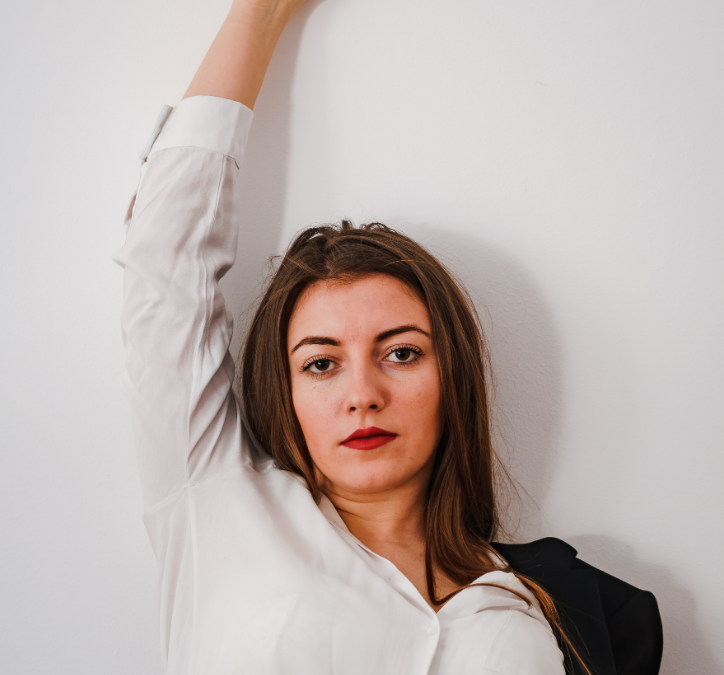
by pam | Nov 30, 2020 | Change, Creative Living, Dealing with Stress, Dealing with Uncertainty, Embracing Change, Uncertainty, Women in Business
We are almost 9 months into the pandemic. How has it been for you? It is useful to reflect on what you’ve learned from a life change/period of uncertainty/transition.
According to William Bridges, author of “Transitions: Making Sense of Life’s Changes”, in order to move successfully from one life transition to another, it is important to let go of any negative emotions associated with it, to celebrate the positive aspects and lessons learned from it … and to get clear on your vision for a new life, relationship, career, business.
Bridges differentiates between a life change and a transition. He states that a life change is situational and external to us, whereas a transition is internal and psychological. It is the internal work we do to adapt and reorient ourselves to our new external reality.
Research and life experience show that if we don’t do the internal transition work, then we often recreate the same patterns in our lives. An example is someone after 3 marriages realizes that s/he has married 3 men/women who are similar having dealt with the same issues in each marriage, never resolving them but instead recreating them and remaining unhappy and unfulfilled or moving on to the next.
In my personal life, work with clients, and interviews with leaders, I’ve discovered that people have reacted in many different ways during the pandemic. Some were initially knocked off balance and found it really challenging to deal with all the changes in their work-life, family life, and personal life. They had difficulty focusing and were unproductive. Many have been “up and down” in terms of their emotions and focus during the pandemic. In contrast, others after the initial shock, found their creative juices flowing and dove into new projects. They continue to feel energized and optimistic.
No longer having to commute to work, many have taken time to reflect and realized the work they were doing was not fulfilling. They have been preoccupied thinking of how they can transition out of a “real” job and start that business they’ve been dreaming about.
Others are reeling from the loss of a loved one or loved ones who were sadly taken from them due to COVID-19. Still others have recovered from COVID-19 with negative impacts on their health that have forced them to change their lifestyles and adapt to their “new normal”.
The pandemic, in the context of change and uncertainty, has caused much upheaval in many of our lives. It has also put us in touch with how we typically respond to change and why. Do you typically embrace or resist change and uncertainty?
Here are a few questions to ask yourself to reflect on and provide you with insight into how you respond to change and uncertainty. I encourage you to take some time and journal your responses to the following questions: What have you learned from COVID-19 about …
yourself?
your partner?
your family?
your workplace/who you work for/your team?
how you work best?
the environment?
Inequities happening around the world?
Learn from and embrace life transitions is one of the 7 keys in my book “Learning to Dance with Life: A Guide for High Achieving Women”. Several years after writing it and coaching a number of business and professional women, I realized that out of the 7 keys, it is the master key that “unlocks the door” to a life of increased health, happiness, fulfillment and inner peace.
Working further with leaders and changemakers, I created the Art of Change Framework: A Guide to Personal and Organizational Change. If you’d like to learn more about how to embrace change, I invite you to access “The Art of Change Framework” on my homepage at: https://pamela-thompson.com/
What have you learned about yourself and others since COVID-19 began? I welcome your thoughts and comments below.

by pam | Nov 22, 2020 | Change, Changemaker, Creative Living, Feminine Leadership, Leadership, Women in Business
The way many of us in the world are currently living and working is not sustainable. The way our organizations and societies are structured, how they are led, and how success is defined are being questioned. Our day-to-day actions and the beliefs and values on which they are based, are resulting in many of us experiencing chronic stress leading to negative impacts on our bodies, minds, relationships, productivity, and our bottom lines.
Our reliance on fossil fuels and a world focusing on consumption and the belief that earth’s resources are infinite are now being challenged. We now have data to show how nature can heal itself if we let her. Many of us are finally embracing the need to take action to preserve and save our beautiful planet and the fauna and the flora within it.
COVID-19 has shone the light on a number of the inequalities such as systemic racism, gender-based violence … and we are now acknowledging that we need to take action NOW toward creating a world that works for everyone.
What can you do? Where can you start?
We know that change starts from the inside-out and begins with each and every one of us.
The 7 keys to what I call Creative Living and the strategies and practices associated with them are an excellent starting point to begin to “be the change”.
I introduced the concept of Creative Living in my book “Learning to Dance with Life: A Guide for High Achieving Women”. Creative Living is defined as the “conscious cultivation of improved health, happiness, fulfillment and inner peace.”
There are 7 keys to Creative Living with proven practices and powerful strategies based on my own journey and work with clients from diverse cultures and backgrounds that are supported by evidence from neuroscience, the health promoting and healing benefits of the arts, organizational development and eastern psychology.
The 7 keys to Creative Living are: 1) Listen to and Trust in Your Body’s Wisdom; 2) Tap into and Express Your Creative Side; 3) Consciously Create Right and Left Brain/Body Balance; 4) Live in Alignment with Your Core Values; 5) Believe that You are Here to Make a Difference; 6) Learn from and Embrace Life Transitions; and 7) Find Inner Peace and Build Peace in Your Family, Community, Workplace … the World.
If you would like to learn more you can access “Learning to Dance with Life” on Amazon. Here’s a link: Learning to Dance with Life: A Guide for High Achieving Women
In my next few posts, I will be sharing how each of the 7 keys can support you to “be the change” you want to see in the world. Stay tuned!
I’d love to hear from you. Feel free to share your comments below; e.g. What strategy or strategies do you believe are important for creating a world that works for everyone?

by pam | Nov 12, 2020 | Creativity, Feminine Leadership, Leadership, LeadinginUncertainTimes, Uncertainty, Women in Business
Why is tapping into and expressing your creative side important for leaders today?
Let’s clarify what I mean by “tapping into and expressing your creative side”. As you know, we have both a left and right brain. The left brain is associated with logic, structure, language, words and rational thought; whereas the right brain is associated with creativity, emotion, “big picture” thinking and intuition. We tap into both sides of our brain for a variety of our daily tasks; however, we are usually right or left-brain dominant. Someone who is right-brain dominant is more adventurous, creative and emotional. An example of someone who is left-brain dominant is a person who is orderly, logical and analytical. When we tap into and express our creative side we are tapping into our right brain.
Since the Second World War, our organizations, educational systems and what we value have largely been structured around and based on left-brain logic and values such as “doing” more than “being” and valuing “competition” over “collaboration”.
Faced with increasingly complex issues such as climate change, systemic racism, and the rapid rate of technological change, authors such as Daniel Pink (in A Whole New Mind) and Sir Ken Robinson (in The Element) have made the case that we need to shift our emphasis away from valuing mainly left-brain traits/functions. They encourage us to change our organizations and educational systems so they encourage, stimulate and reward the right-brain functions of creativity and innovation.
Today’s leader needs to have a vision and inspire others based on that vision. Visioning a desired future involves tapping into your right brain. During these times of intense change and uncertainty it’s important to let go of old ways of thinking and acting and explore new paradigms and ways of thinking and acting. A creative leader encourages innovation and new ways of thinking and acting.
An example is rather than the senior management team in an organization sitting in a room on their own with a consultant developing a strategic plan and then communicating it down through the layers of the organization, there is much value in facilitating the creation of a shared vision where people throughout the organization are part of the process and can see themselves in and have ownership for the strategic plan.
From my own experience consulting with organizations in various parts of the world, I have experienced the power of facilitating a shared visioning process and enabling people through various levels of an organization to participate in that process. While working with the Ministry of Public Health in Afghanistan to develop their first strategic plan and build the capacity of a planning team I was assigned, we conducted group consultations across the Ministry. The findings from these consultations fed into a process that included a national level workshop where other key stakeholders were engaged to identify the Strategic Directions and key activities they believed were important to move them toward their shared vision.
Shared visioning is also powerful when designing a new project or program. I have used this strategy; for example, while leading a design team for a donor-funded project in Nigeria, where we facilitated a planning process in the 2 states where the project was being implemented, one in the Muslim North and one in the Christian south. Key stakeholders from each state created a shared vision, identified the key challenges and opportunities in their current situation and key areas that needed support to move from their current situation to their desired future vision. These 2 visions were shared by state representatives (selected by their peers) at a national level workshop with other national level stakeholders. The power of this process led to increased understanding among the two groups and laid the foundation for them to work more effectively together over the 5 year project.
In order for shared visioning and the exploration of new ideas and solutions to occur, you need to believe in your people and create a safe environment/culture where new ideas are encouraged, and mistakes are accepted and viewed as learning opportunities. Engineers without Borders is an excellent example of an organization who have created such a culture. A number of years ago they instituted an Annual Failure Report. As part the process, Project Managers from their various projects around the globe were interviewed and asked to openly share their lessons learned (what worked and what didn’t) in the previous year. These lessons were then built upon and fed into the next year’s planning process. Rather than only report on the positive outcomes of the year, they were encouraged and supported to share and learn from their mistakes. This is the way to improve; to create and share with others the challenges you have faced and explore how you can learn from and prevent them in the future.
As a leader in your community, workplace, business … , you know that change begins with you, as you are a role model for others. So how can you learn to cultivate and tap into your creative side? One way is through the following exercise.
Sit down in a quiet place, free from distractions. Take a few deep breaths to relax yourself and close your eyes for a couple of minutes if you feel comfortable doing so. Ask yourself the following questions and write down your responses to them. Write down the first thing that comes to mind without judging or editing it.
- Do you consider yourself a creative person? If yes, why? If not, why not?
- Are there any creative pursuits you did as a child but haven’t done for years? If so, what are they?
- Are there some creative or artistic pursuits you would be interested in exploring?/trying out?
- Commit to either starting to integrate a childhood “passion” into your life or choose a new one such as “learning to play the piano” that perhaps you always wanted to do as a child but never had the opportunity to pursue. Identify the next steps for taking action to integrate a new or “old” creative or artistic pursuit into your life. It’s helpful to use a two-column table with “activity” heading one column and “timeline” the other.
- Support is important for many of us when starting something new and continuing with it. Enlist the support of a friend, colleague or family member to encourage and support you in your new endeavor or invite them to join you in doing it.
There are a number of other practical strategies for “tapping into and expressing your creative side” in Chapter 5 of my book Learning to Dance with Life: A Guide for High Achieving Women.
What tools and strategies have helped you get in touch with your creative side? Do you agree that creativity is an important leadership quality for these constantly changing and uncertain times? I welcome your comments and experiences below.

by pam | Nov 6, 2020 | Entrepreneurship, Feminine Leadership, High Achieving Women, Leadership, Women in Business
Have you ever interviewed a potential staff person or manager who on paper looked amazing, answered the questions thoughtfully, came to the interview well-groomed and appeared well-mannered and reliable? Your rational mind (left brain) thought “this a great candidate; I want to hire her or him”, yet there was something niggling that you couldn’t quite put your finger on. Something that didn’t feel right; yet you went ahead and hired that person. Three months after they started their position, you realized they were not a good “fit” for the organization. One of your organizational values was collaboration and they were extremely competitive to the point of withholding information from other team leads. On reflection, you realized that your body had told you this person wasn’t right for the organization and yet you let your head overrule your heart and did not listen to your body’s wisdom.
As women, many of us have been taught from a young age that in order to get ahead and be successful, we need to suppress our natural feminine qualities such as intuition. These feminine qualities have been undervalued in general in our families and by society and we have learned that in order to get ahead in business and in life that we need to assume the more dominant masculine qualities such as rationality and valuing logic over intuition.
The recent pandemic has shone the light on many aspects of our societies and organizations that are no longer working. It has reinforced the need for us to reconnect with our authentic feminine leadership qualities[1] such as intuition, collaboration and creativity[2] and recognize their value and importance.
As authentic feminine leaders how can we reconnect with those parts of ourselves that we have disconnected with based on previous feedback and experience? How can we learn to listen to and trust in our body’s wisdom?
- The first step is to believe that your intuition is a valuable quality and you can learn to access it and trust it. Dr. Bruce Lipton[3], a stem cell biologist, has done extensive research to show that the cells of our body are affected by our thoughts. This means your thoughts and beliefs biochemically affect your body and you have the power to change them.
Did you know that our heart and gut have nerve endings that send signals to our brains? The Heart Math Institute – https://www.heartmath.org – has done research showing the powerful influence our hearts and guts have on decision-making and strategic thinking.
- Become consciously aware of your body. Notice the feelings you are experiencing. For example; have you sensed tension and stress when you walk into certain environments or organizations? We often say “We could cut the air with a knife.” Have you noticed that when interacting with certain individuals you feel tense and can’t wait to leave their presence? These are examples of our bodies warning us and trying to keep us safe.
On the other hand, have you been with someone who makes you feel appreciated and valued in his or her presence? Our bodies are amazing receivers and transmitters of information. Integrating tools and strategies that bring conscious awareness into our lives enhance our leadership abilities.
- Learn practices and tools that help you get out of your head and into your body.
- Body Scanning – is a mindfulness technique from Eastern psychology that is rooted in Buddhist principles. Mindfulness teaches us to focus on feeling emotions and sensations in our bodies and notice what is going on in our minds. The practice helps us to focus and be present. Rather than thinking about the argument we had with our partner this morning or worrying about the performance review we are having this afternoon, instead we focus on the here and now.
Here’s an example of how to do body scanning. I find it helpful to do it in bed on awakening. It then “sets me up for the day”.
Sit comfortably, close your eyes, and take several deep breaths in through your nose and out through your mouth. Then return to regular breathing; in through your nose, and out through your nose.
From a state of open and relaxed awareness begin scanning your body from the top of your head to the tips of your toes. Notice any sensations you feel (without judging them) from your scalp, forehead, ears, eyes, nose, cheeks, and mouth. Then move down through the rest of your body. You may scan several times from head to toe in one sitting, or, after scanning once, attend to places in your body where you feel the most sensation. Experiment with this tool and find the process that is most useful for you. This may be done first thing in the morning and/or at night before you retire. It also may be done at various other times during the day.
- Spend regular time in nature – make a conscious effort to spend at least 30 minutes outdoors in nature each day if possible. Find a park, go for a hike or walk among trees or close to a body of water. Notice how your body feels when in the forest or by water. Focus on your senses rather than your thoughts.
- Practice yoga regularly (at least 3 times a week) – There are many types of yoga available. Experiment with different styles and find one that works for you. Yin yoga is a good place to start, especially if you have an active mind that rarely stops chattering. Yin has a meditative quality, is usually done in a warm room and involves holding poses for up to five minutes so that connective tissues loosens and energy blocks release. There are many studios who now offer classes online for minimal cost.
- Meditate daily (for at least 10 minutes) – You may be thinking: “I don’t have time to meditate”. That’s what I thought for many years until January 2013 when after almost burning out, I began meditating on a daily basis. I was and still am amazed by the benefits. Meditation enables me to be less reactive and more responsive in my interactions with others. I’ve noticed that at times it enables my brain to “split” so that when I’m engaged in an interaction, I also experience part of myself “sitting on my shoulder” observing the interaction. This provides me with the big picture and helps me stay calm and detached from the outcome. Daily meditation has enabled me to quiet my mind, freeing me from the chatter that is often not helpful in focusing and moving toward my goals.
- Nurture your body on a regular basis – I find it helpful to have a total body massage every 4 to 6 weeks with a trusted practitioner. Some massage therapists are also healers and energy workers and I ask them what they notice about my body. These massage therapists/body workers can help you go within and get in touch with what your body is telling you. They can also help release energy blocks that may be negatively impacting your body and decision-making.
Another strategy I’ve found helpful is to ask myself/my body “how can I nurture myself today?”, listen to what comes up and reward myself. It could be a bubble bath with candles and your favorite music playing, it could be curling up and reading your favorite book or poetry. Whatever it is, listen to the message and if possible, reward yourself.
This is a start. For additional evidence and tools to help you reconnect with your intuition and learn how to use your body to make wise decisions see Chapter 4 in my book Learning to Dance with Life: A Guide for High Achieving Women.
I welcome your comments below. What tools and strategies have helped you get in touch with your intuition? Do you agree that intuition is an important authentic feminine leadership quality?
[1] It is important to note that men can also possess and learn feminine leadership qualities.
[2] https://pamela-thompson.com/why-feminine-leadership-holds-the-key-to-creating-a-world-that-works-for-everyone/
[3] To learn more about Dr. Lipton’s groundbreaking work check out his book “The Biology of Belief – Unleashing the Power of Consciousness, Matter & Miracles” (2008) published by Hay House Inc.



